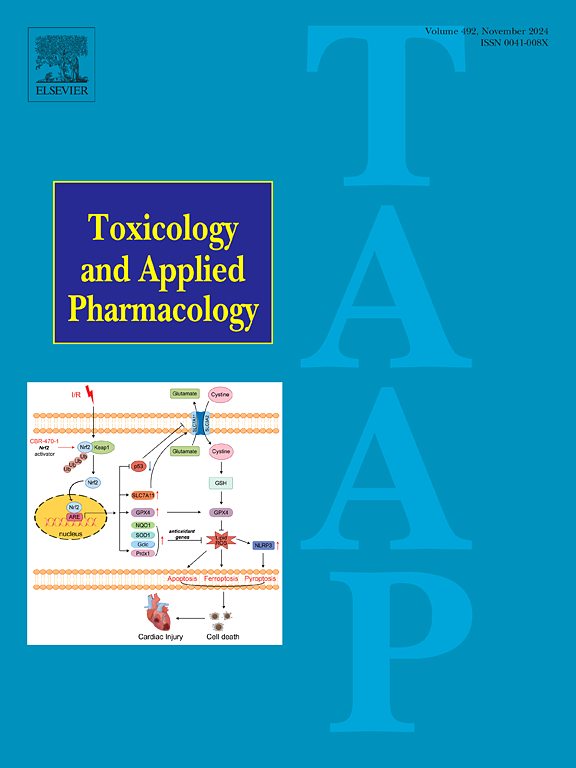Screening of oxidative stress components of cigarette smoke based on machine learning model integration
IF 3.4
3区 医学
Q2 PHARMACOLOGY & PHARMACY
引用次数: 0
Abstract
Cigarette smoke, a complex mixture of more than 7000 chemicals, poses a significant threat to human health, with oxidative stress being an important mechanism in its associated diseases. Traditional methods for assessing the toxicity of cigarette smoke components, such as animal and cell-based assays, are often limited by their high cost and time consumption. This study integrates multiple machine learning algorithms and diverse data sources to construct a robust predictive model for identifying oxidative stress-inducing components in cigarette smoke. Utilizing a multi-dataset, multi-target and multi-algorithm modeling strategy, we developed an integrated model comprising 704 sub-models. These models were trained from 9 datasets related to reactive oxygen species (ROS)-associated pathways. The integrated model demonstrated better performance in external validation compared to individual models, predicting 974 ROS-positive components from 7111 cigarette smoke components. These components were clustered into 10 major classes, providing new insights into the structural diversity of oxidative stress-inducing components in cigarette smoke. Our findings offer a novel approach for enhancing the predictive capability of toxicity models and advancing the understanding of oxidative stress-related toxicity in cigarette smoke components.

基于机器学习模型集成的香烟烟雾氧化应激成分筛选
香烟烟雾是7000多种化学物质的复杂混合物,对人类健康构成重大威胁,氧化应激是其相关疾病的重要机制。评估香烟烟雾成分毒性的传统方法,如基于动物和细胞的测定,往往受到成本高和耗时长的限制。本研究整合了多种机器学习算法和多种数据源,构建了一个强大的预测模型,用于识别香烟烟雾中诱导氧化应激的成分。采用多数据集、多目标、多算法建模策略,构建了包含704个子模型的集成模型。这些模型是从9个与活性氧(ROS)相关途径相关的数据集中训练出来的。与单个模型相比,集成模型在外部验证中表现出更好的性能,从7111种香烟烟雾成分中预测出974种ros阳性成分。这些成分被分为10大类,为香烟烟雾中氧化应激诱导成分的结构多样性提供了新的见解。我们的发现为提高毒性模型的预测能力和促进对香烟烟雾成分中氧化应激相关毒性的理解提供了一种新的方法。
本文章由计算机程序翻译,如有差异,请以英文原文为准。
求助全文
约1分钟内获得全文
求助全文
来源期刊
CiteScore
6.80
自引率
2.60%
发文量
309
审稿时长
32 days
期刊介绍:
Toxicology and Applied Pharmacology publishes original scientific research of relevance to animals or humans pertaining to the action of chemicals, drugs, or chemically-defined natural products.
Regular articles address mechanistic approaches to physiological, pharmacologic, biochemical, cellular, or molecular understanding of toxicologic/pathologic lesions and to methods used to describe these responses. Safety Science articles address outstanding state-of-the-art preclinical and human translational characterization of drug and chemical safety employing cutting-edge science. Highly significant Regulatory Safety Science articles will also be considered in this category. Papers concerned with alternatives to the use of experimental animals are encouraged.
Short articles report on high impact studies of broad interest to readers of TAAP that would benefit from rapid publication. These articles should contain no more than a combined total of four figures and tables. Authors should include in their cover letter the justification for consideration of their manuscript as a short article.

 求助内容:
求助内容: 应助结果提醒方式:
应助结果提醒方式:


